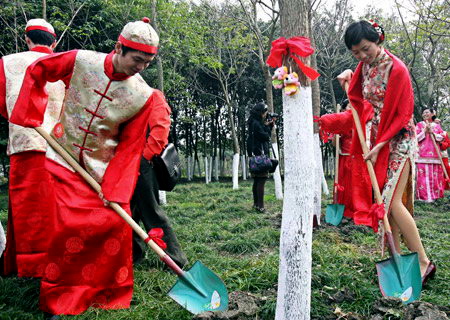| Home > Living in China > Kungfu |
Everybody was kungfu fighting
Niels Tsai, a kungfu enthusiast from Malaysia, was halfway up misty Wudang Mountain, Hubei province, at the end of last month when he was thrilled to see an elegant yet powerful Wudang-style tai chi performance delivered by 2,300 college students in a dirt square.
For centuries, the mountain in central China, in the middle reaches of the Yangtze River, has been a Mecca for Taoists.
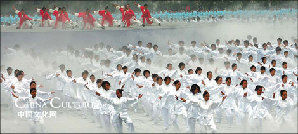 |
|
Everybody was kungfu fighting |
It is also widely believed to be the cradle of tai chi, one of the three major neijia (internal) kungfu genres. The other two are xinyi quan and bagua zhang.
"This was the first time I had come to China seeking the roots of tai chi," said the businessman with excitement.
A long-time practitioner of tai chi, Tsai was delighted to see the original Wudang-style tai chi, the prototype for many kungfu styles that have found their way to many parts of the world.
"I am planning to be apprenticed by a local master to learn more about Wudang kungfu," he said.
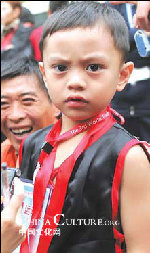 |
|
|
Tsai was among tens of thousands of kungfu fans from home and abroad who last week flocked to Shiyan, the city at the foot of the Wudang Mountain.
They came for the Third World Traditional Wushu Championships, the highest-level and largest event for lovers of traditional Chinese martial art that is held every two years.
"Winning the championships is one of our aims. We hope to make friends and learn from other athletes who are practicing authentic Chinese kungfu like us," said Markovetc Igor, 40, a coach of one of the six kungfu teams from Russia that attended the event.
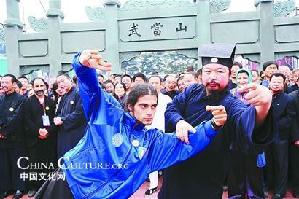 |
|
|
A total of 93 Russian athletes visited, many of whom had attended and won titles at the previous two events held in 2004 and 2006 in Zhengzhou, Henan province.
The kungfu gathering in Shiyan attracted at least 2,000 contestants, aged between 4 and 86, from 69 countries around the world, competing for 300 coveted awards, said Wang Xiaolin, chairman of the Chinese Wushu Federation and secretary-general of International Wushu Federation (IWUF), a key organizer of the event.
The IWUF, founded in Beijing in 1990, gained official recognition at the 113th Convention of International Olympic Committee (IOC) in February 2002.
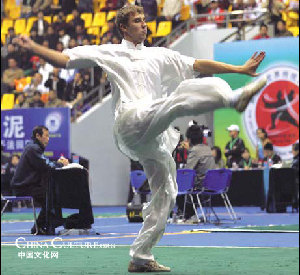 |
|
|
At the same time, wushu, too, became a sport genre officially recognized by the IOC. Although wushu has failed to become an Olympic event, it has won increasing popularity among people, especially youths around the world, Wang noted.
For instance, over 100 million people in 120 IWUF member states in five continents are practicing tai chi and other Chinese martial arts, according to Wang.
"The championships offer a rare chance to promote many traditional Chinese martial arts that were previously unknown to the outside world," said Liu Jinzu, 73, a veteran fengshou quan master from Gansu province.
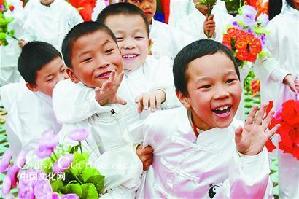 |
|
|
Fengshou quan (literally "hands blocking fists") is a time-honored martial art genre popular in Northwest China. It used to be a must-have, lethal technique for security guards who escorted caravans of expensive goods and jewelry.
As it was taught among selected disciples in secrecy and had a strict training system, the traditional Chinese wushu style is little known even to most Chinese kungfu practitioners, according to Liu, a retired technician who began learning kungfu from his father at the age of 7.
There are still less than 200 people in Xinjiang, Qinghai, Gansu and Ningxia who practice fengshou quan, said Liu who has invested much of his energy in training his grandson, Liu Kezhong, a 16-year-old silver medalist at the championships.
Art
 more
moreThe Dawn Breaks
(the prehistoric period - the 16th century BC) Ancient documents

2008 World Craft Council General
The 16th WCC General Assembly was held in China’s southern city of
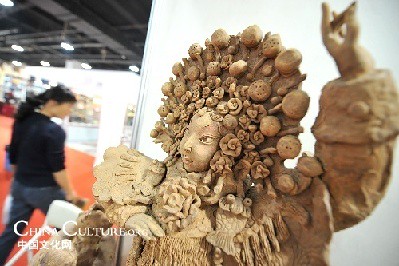
Traditional wooden movable
Villagers print the book of the Chen's family tree
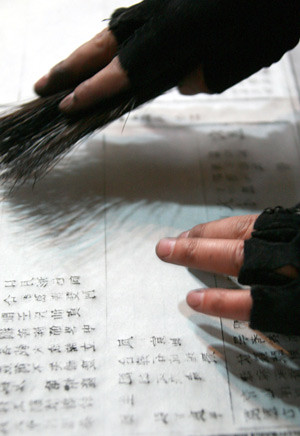
Customs
 more
moreChinese Kungfu
Everybody was kungfu fighting
Niels Tsai, a kungfu enthusiast from Malaysia, was halfway up misty
Tai chi helps cut pain of knee arthritis
The traditional Chinese form of exercise known as tai chi can help
Kungfu Taste: Learn Martial Art in Shaolin Temple
The mention of Shaolin Temple conjures up images of a quiet and




 print
print  email
email  Favorite
Favorite  Transtlate
Transtlate 